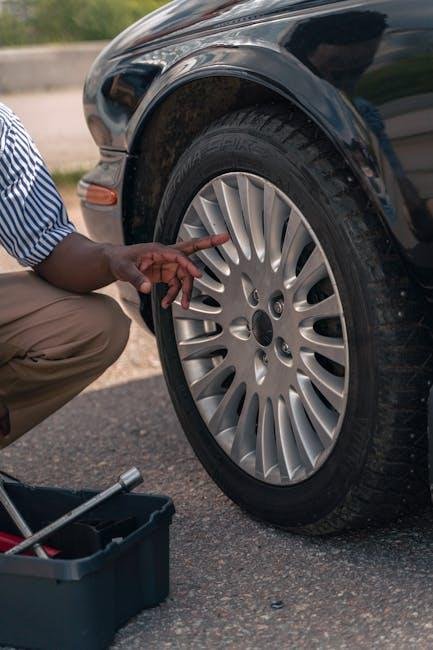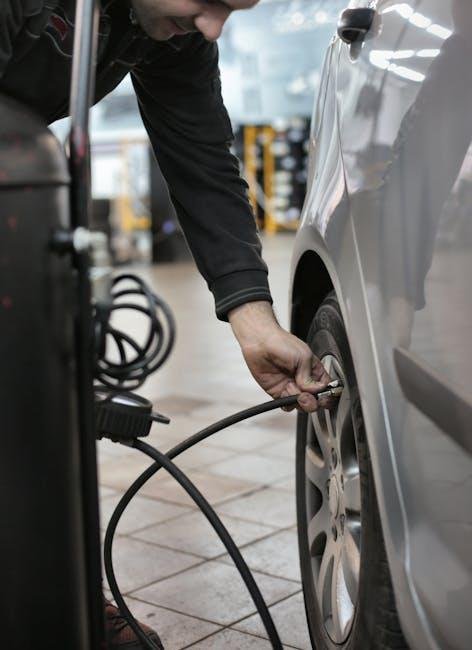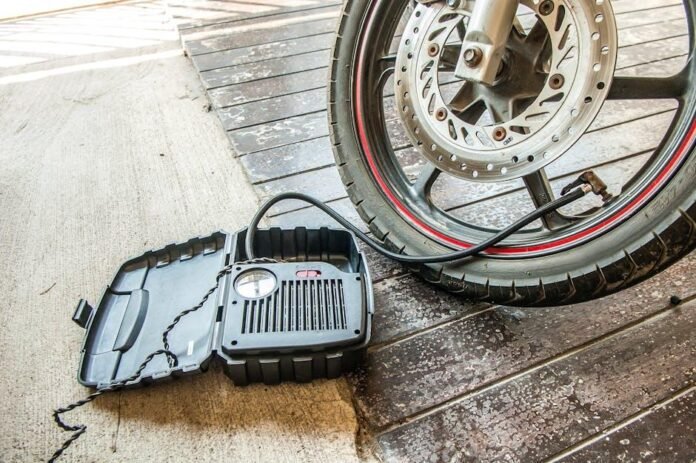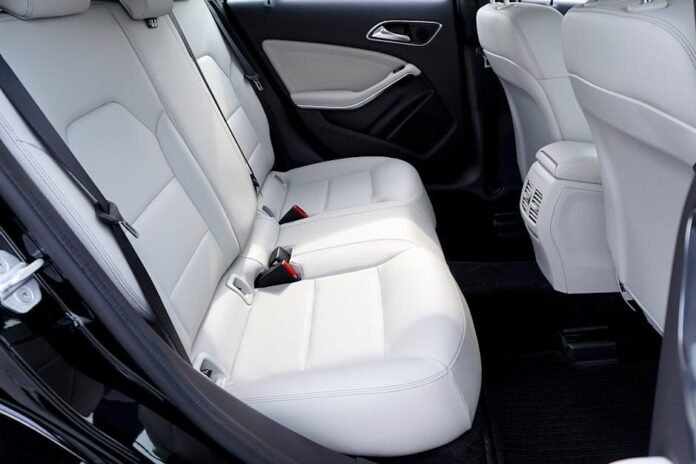as the crisp chill of winter settles in and the landscape transforms into a frosty wonderland, manny drivers overlook one essential element that can have a notable impact on their safety and vehicle performance: tire pressure. Just as winter coats and hot cocoa are vital for keeping warm, ensuring that your tires are properly inflated is crucial for navigating icy roads and unpredictable weather conditions. Cold temperatures can cause tire pressure to drop, leading to decreased traction, increased wear, and potentially hazardous driving situations. In this article,we will explore practical tips for maintaining optimal tire pressure during the colder months,helping you stay safe and prepared for whatever the winter roads may bring. Whether you’re a seasoned winter driver or new to navigating snowy terrains, these insights will ensure your journey remains smooth and secure throughout the season.
Understanding Tire Pressure dynamics in Cold Weather
As temperatures drop, the dynamics of tire pressure undergo a noticeable shift. Cold air causes the air inside your tires to condense, which can lead to a reduction in pressure. For every 10-degree Fahrenheit decrease in temperature, your tire pressure can drop by about 1 PSI (pound per square inch). This phenomenon can be notably troublesome during the winter months, as many drivers may find themselves with under-inflated tires without being aware of it. Regularly checking your tire pressure becomes essential not only for maintaining optimal performance but also for ensuring safety on icy or snowy roads.
To combat the effects of cold weather on tire pressure, consider the following recommendations:
- Check your tire pressure frequently: Aim to check at least once a month and especially before long trips.
- Inflate tires to the recommended PSI: Refer to your vehicle’s manufacturer specifications, typically found on a sticker in the driver’s door or in the owner’s manual.
- Monitor temperature changes: Be extra vigilant during significant weather fluctuations to prevent pressure drops.
- Invest in a quality tire pressure gauge: Accurate readings will help you make informed decisions about tire care.
| Temperature (°F) | Approx. Pressure Drop (PSI) |
|---|---|
| 70° | 35 PSI |
| 60° | 34 PSI |
| 50° | 33 PSI |
| 40° | 32 PSI |
| 30° | 31 PSI |
| 20° | 30 PSI |

Assessing the Impact of Temperature Fluctuations on Tires
Temperature fluctuations can have a significant affect on tire performance and safety. As the mercury dips, the air within your tires contracts, resulting in a drop in tire pressure. This can lead to several issues, including reduced fuel efficiency, compromised handling, and increased tire wear. Maintaining optimal tire pressure is crucial, as tires lose approximately 1 psi (pound per square inch) for every 10°F decrease in temperature. therefore, regular checks of your tire pressure during the colder months are essential for ensuring that your vehicle operates effectively and safely.
To mitigate the adverse effects of temperature changes on your tires,consider the following strategies:
- Regular Pressure Checks: Inspect your tire pressure at least once a month and before long trips.
- Adjust for Cold: Inflate tires to the manufacturer’s recommended pressure, accounting for the temperature drop.
- Monitor Tread Depth: Ensure that your tires have sufficient tread to grip slippery surfaces.
| Temperature (°F) | Recommended Tire Pressure (psi) |
|---|---|
| 30 | 32 |
| 20 | 34 |
| 10 | 36 |

Essential Maintenance Practices for Optimal Cold Weather Performance
Maintaining your tire pressure during colder months is crucial for ensuring safety and enhancing vehicle performance. As temperatures drop,the air inside your tires contracts,causing pressure levels to decrease. To counteract this natural phenomenon, its advisable to check your tire pressure regularly, ideally once a month. Another essential practice is to inspect your tires for any signs of wear or damage, as winter roads can be particularly unforgiving. Remember to keep a reliable air pressure gauge in your vehicle for on-the-go checks.
When adjusting tire pressure, always refer to the manufacturer’s recommended specifications, which can usually be found on the driver’s side door jamb. Here are some key points to consider:
- Inflate tires properly: Use a compressor to bring pressure to recommended levels.
- Avoid overinflation: This can lead to a harsher ride and increased risk of tire blowouts.
- Don’t forget the spare: The spare tire also requires regular checks and inflation.
| Temperature (°F) | Pressure Drop (PSI) |
|---|---|
| 32 | 1-2 |
| 20 | 2-3 |
| 10 | 3-4 |
| 0 | 4-5 |

tips for Properly Inflating Tires During Winter Months
Maintaining proper tire pressure during the colder months is essential for safety and fuel efficiency. as temperatures drop, the air inside your tires contracts, leading to a decrease in pressure. To ensure optimal performance, it’s crucial to regularly check your tire pressure, especially before long trips or when weather conditions are unpredictable. Here are some important points to remember:
- Check Tires Regularly: Aim to check your tire pressure at least once a month and before any significant trips.
- Use a Reliable Pressure Gauge: Invest in a quality tire pressure gauge that provides accurate readings for peace of mind.
- Adjust Pressure Accordingly: Inflate your tires to the manufacturer-recommended pressure; this is typically found on a sticker inside the driver’s door or in the owner’s manual.
- Consider Temperature Changes: For every 10°F drop in temperature, tire pressure can decrease by 1 PSI. Be proactive in adjusting accordingly.
Beyond checking pressures, taking care of your tires can enhance their longevity and performance. Utilize this simple table to help remind you of the ideal pressure adjustments based on temperature:
| Temperature (°F) | Recommended PSI |
|---|---|
| 50°F | 32 |
| 40°F | 31 |
| 30°F | 30 |
| 20°F | 29 |
Remember, keeping your tires properly inflated not only helps improve safety on icy roads but also optimizes your vehicle’s fuel economy. Regular maintenance will save money in the long run and provide peace of mind during winter driving conditions.
The Way Forward
as the temperature drops and winter sets in, keeping an eye on your tire pressure is not just a matter of convenience—it’s a crucial step for safety on the road. By monitoring and adjusting your tire pressure according to the cold weather guidelines we’ve discussed, you can enhance your vehicle’s performance, improve fuel efficiency, and ensure a smoother ride, no matter the conditions outside.Remember, a little preparation goes a long way in facing the chill.So, before you embark on your next winter journey, take a moment to check your tires. With proper maintenance and a proactive approach, you’ll navigate thru frosty mornings and snowy landscapes with confidence. Safe travels this winter!










